The Complex State of Healthcare in the Inland Empire
A fireside chat with Alison Elsner of the San Bernardino County Medical Society and Ruthy Argumedo of Molina Healthcare
In an insightful and enlightening chat, Reach Out brought two of our key partners together to discuss the issues facing the healthcare sector in our region and to explore how collaboration is making a difference.
Two Caring Individuals, Two Committed Organizations
Alison Elsner, the Executive Director of the San Bernardino County Medical Society, highlighted the shortage of physicians in California, especially in areas with low-income populations. She noted that, in certain places like the Inland Empire, the physician to patient ratio is as low as 1 doctor to every 9,000 patients. For Elsner, tackling this issue calls for collaborative strategies, including legislative advocacy, raising public awareness, and the continued advocacy of the ‘White Coat Program,’ which gives high school students and college students the chance to learn about the varied career paths within the healthcare field.
Ruthy Argumedo, Associate Vice President at Molina Healthcare, echoed Elsner's concerns, emphasizing the role of collaboration in mitigating the problem. According to Argumedo, one of the key challenges lies in recruiting and retaining healthcare professionals in underserved areas. Molina Healthcare's initiative 'Community Connector' aims to bridge this gap by connecting healthcare providers to the community. Argumedo also touched on the importance of wellness programs in improving overall health and addressing systemic issues.
Elsner’s organization represents physicians and advocates for policies to promote equitable patient access. Meanwhile, Argumedo's organization serves over 5.3 million members in 21 states, focusing on communities most vulnerable to health disparities. Argumedo, who has been with Molina for 16 years, works extensively in community engagement and partnerships, striving to address social determinants of health and close gaps in care services.
Both organizations partner with Reach Out to focus on healthcare workforce development, patient advocacy, and closing care gaps through collaboration with one another and with the community.
Reach Out is a Conduit for Collaboration
For both women, collaboration with Reach Out goes back several years, with Argumedo working with the organization for over 15 years. Her partnership started with the Latino Health Collaborative, a group that concentrates on health initiatives and social justice in the Hispanic community. They have expanded to various programs, with Argumedo highlighting the Mamás y Bebés campaign. This eight-week course focuses on mental health for new mothers, providing resources and giving them a voice in their care and in the care of their children.
Elsner highlighted the importance of Reach Out’s work in the Inland Empire and Southern California. Reach Out's commitment to workforce development and creating healthcare career pathways for young people is well aligned with the San Bernardino County Medical Society’s priorities. This shared interest led to a collaboration on the ‘White Coat’ program, which places high school and community college students in physician offices and practice settings to inspire them to pursue healthcare careers.
However, attracting and retaining healthcare professionals in the Inland Empire remains a significant challenge. Argumedo shared that often medical graduates and residents leave the state or shift to other regions due to better financial incentives or personal desires, driven by the significant weight of student loans to be repaid. Elsner also described the growing competition from employee-based medical organizations that can offer more regular hours and greater flexibility for providers.
Healthcare is a Complex Problem in the IE
The discussion then moved to a critical component in the healthcare equation: the pay that physicians receive, particularly those dealing with Medi-Cal patients. Elsner pointed out the discrepancy in compensation between physicians under Medi-Cal, where reimbursement rates are about 50% of what Medicare offers, and Medicare reimbursements are already low.
Argumedo added another layer to the issue, by emphasizing the need to view it from two perspectives: providers and patients. In areas like San Bernardino and Riverside, both limited access to and fear of healthcare services are prominent. She elaborated that while there might be sufficient healthcare providers in certain regions, including federally qualified health centers, various factors may deter patients from seeking their services. These range from lack of education to fear of immigration raids. She cited instances where people avoided accessing healthcare services, even free ones, due to these concerns.
The problem is not only about having enough providers, but also about educating communities to overcome these barriers and fears. An example Argumedo mentioned was the need for people to understand when it's necessary to visit a provider instead of going to an emergency room.
As Elsner suggested, this is where Reach Out shines. Acting as a bridge between healthcare services and the community, Reach Out assists in educating the community on how to provide for their healthcare needs and benefit from available services to create healthier futures for their families.
Meeting Basic Community Needs can Alleviate Some Healthcare Pressures
Later in the chat, Argumedo drew attention to the specific needs in communities, such as the need for diapers. Basic items like these can avert preventable emergency room visits and allow healthcare providers to focus their resources where they're most needed. In this way, collaboration plays a critical role in addressing both healthcare and community needs.
Elsner also introduced the concept of Adverse Childhood Experiences (ACEs) - early life traumas that have been found to negatively impact physical and mental health into adulthood. Both Argumedo and Elsner highlighted the importance of partnerships with organizations that understand and work towards mitigating ACEs. By focusing on these early experiences, they believe the cycle of healthcare issues can be interrupted, leading to better health outcomes overall.
Mental Health is Critical Too
The importance of mental health was underscored throughout the discussion. Elsner and Argumedo painted a clear picture of the cycle of healthcare shortages and their repercussions, emphasizing how they feed each other on an ongoing basis. Their organizations, alongside others, aim to interrupt this cycle, with mental health support being a crucial aspect of this strategy.
Drawing the conversation to a close, both Elsner and Argumedo stressed the passion and dedication that healthcare providers demonstrate every day. Dealing with complex issues, from language barriers to socio-economic challenges, these providers often find themselves providing more than just medical care.
This in-depth conversation ultimately shed light on the importance of understanding and supporting healthcare providers and the unique challenges they face. Above all, it emphasized that the goal of making a difference in the Inland Empire is a shared one, requiring collaboration and a genuine commitment to change.
Want to see the chat? We’re sharing it on our LinkedIn channel all month. Follow us here!
Fostering Conversations on Racial Justice
A Journey Towards Inclusive, Innovative Workplaces and Happier Workers
Our Collective Responsibility to Health
At a time when discussions about racial justice are potentially starting to wane, being pushed out of the limited space in our social consciousness by a looming presidential election, issues with national liquidity, and the enormous noise generated by AI, Reach out is committed to ensuring we don’t lose focus on this critical issue.
Reach Out believes that these conversations are crucial - both in our communities and our homes, and also in our workplaces. We are all responsible for fostering healthy, safe, and peaceful communities, a belief that inspired the creation of our Center for Civic Policy and Leadership and the Healing Communities through Racial Justice (HCRJ) fellowship program.
The Power of Diverse Collaboration: Boosting Innovation and Creativity
Collaboration between individuals of varied cultural backgrounds and levels of expertise enhances innovation and creativity within an organization. The unique experiences, perspectives, and knowledge that diverse teams bring can lead to groundbreaking ideas. A study by Boston Consulting Group demonstrated that companies with above-average diversity in their leadership teams reported innovation revenue rates 19% higher than those with less diverse management, demonstrating the tangible benefits of fostering diversity and inclusion in the workplace.
The Happiness Factor: The Impact of DEI on Workers
According to the CNBC|SurveyMonkey Workforce Happiness Index, employees are happier and more satisfied when their organizations prioritize Diversity, Equity, and Inclusion (DEI) efforts.
The survey found that one-third of workers indicate that their organization is doing “a lot” of work on DEI issues, with another 37% stating that their companies are doing “some” work. Interestingly, industries such as finance, advertising & marketing, technology, and insurance are among those that report the highest DEI activity.
A significant 78% of the workforce agrees with the importance of working for organizations that prioritize DEI, with more than half (53%) considering it to be “very important” to them. This satisfaction and the commitment of organizations towards DEI play a crucial role in fostering happier workplaces.
An article published by the University of Pennsylvania points out how critical DEI initiatives are becoming as the next generation rises through the ranks of the workforce–a generation that considers this factor on par with pay, work/life balance and development opportunities.
Healing Communities through Racial Justice (HCRJ) Fellowship
Our HCRJ fellowship program aims to:
- Advocate, promote, and encourage racial justice in the Inland Empire for Black, Indigenous, and People of Color (BIPOC).
- Develop allies and advocates for the racial justice movement.
- Cultivate racially responsive and inclusive environments within participating agencies over a period of 15 months.
A Participant's Experience: Michele's Journey
Michele Brewer, Director of Operations at Michelle's Place Cancer Resource Center, provides a heartfelt account of her experience during her time in the program. In her words, "Our decision to participate in the HCRJ fellowship wasn't even a thought. Given the climate of our country, we just wanted to make sure we were doing our part."
The Three-Part Journey of the Fellowship
The fellowship involves a journey of understanding, divided into three sections:
- Understanding Where We're Starting as Individuals
- Understanding the basics of racial justice and racial equity work.
- Defining key terms and foundational frameworks.
- Self-reflection on our implicit biases.
- Understanding Where We're Starting as an Organization
- Evaluating current operations of participating organizations.
- Highlighting five dimensions of race equity work within organizations.
- How Your Organization Is Supporting Policy & Systems Work that Addresses Structural Racism
- Identifying and confronting structural racism.
- Advocating for a more just and equitable society.
Michele's participation led to tangible change - the creation of a Diversity, Equity, and Inclusion (DEI) policy for her organization. This policy opened the ability to have more honest conversations within the organization, and to approach those outside of it with more understanding and acceptance. Additionally, Michele pointed out that connections she made with other participants within the fellowship unlocked resources and expanded the services Michelle’s Place could provide to a broader group of people in need.
The Fellowship's Transformative Impact
The fellowship program promotes both organizational and personal growth. For Michele, the program was transformative, equipping her with a stronger voice to act as an ally and advocate for racial justice. "I feel like it made me closer to my co-workers," Michele shared. "I felt like we could have more open, honest conversations about anything."
The Healing Communities through Racial Justice fellowship is more than a program - it's an enlightening journey towards happier and inclusive workplaces. It encourages personal and professional growth and nurtures individuals to become advocates for racial justice. By supporting initiatives like this, we can foster healthier, happier, and more innovative workplaces.



